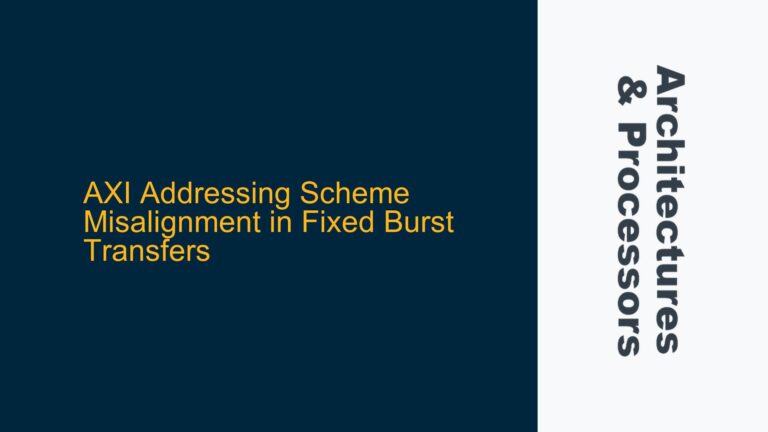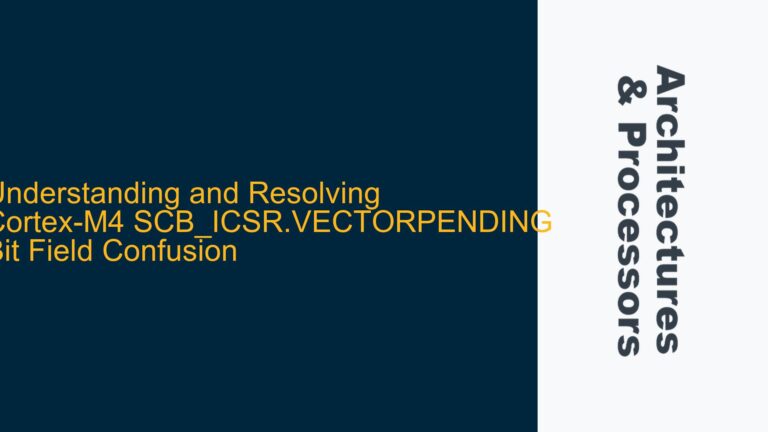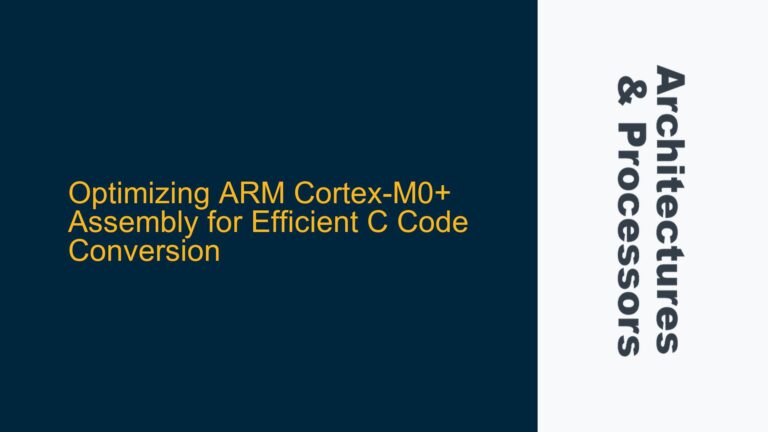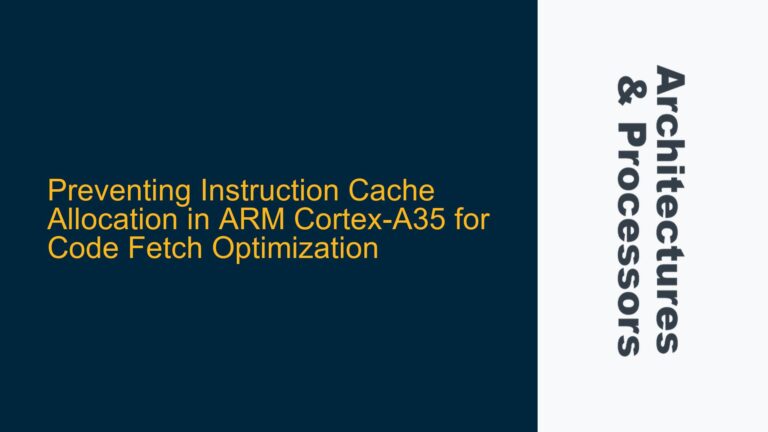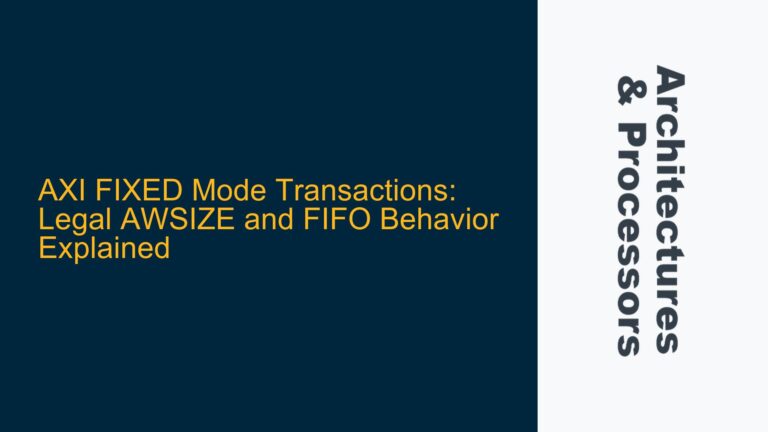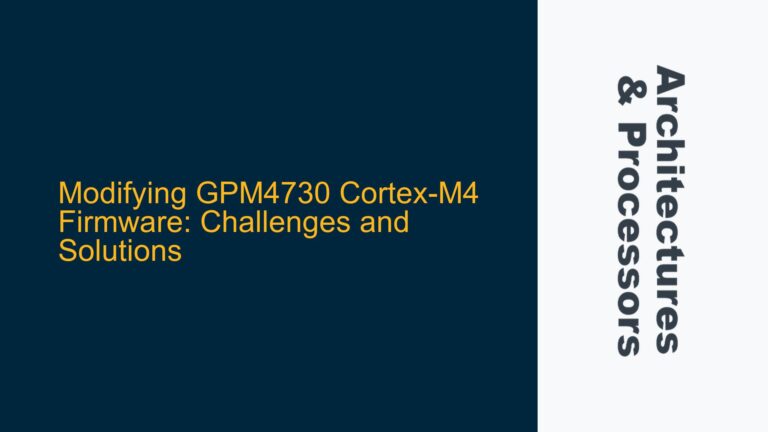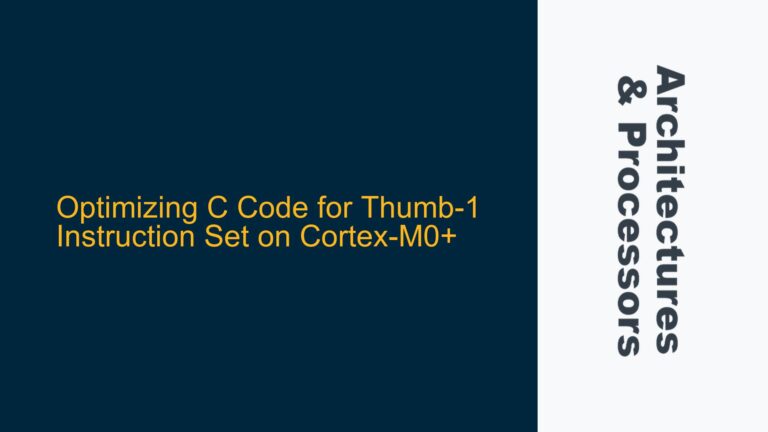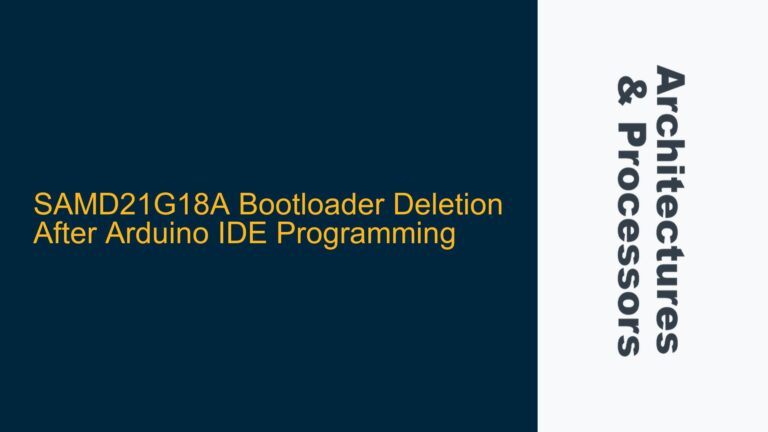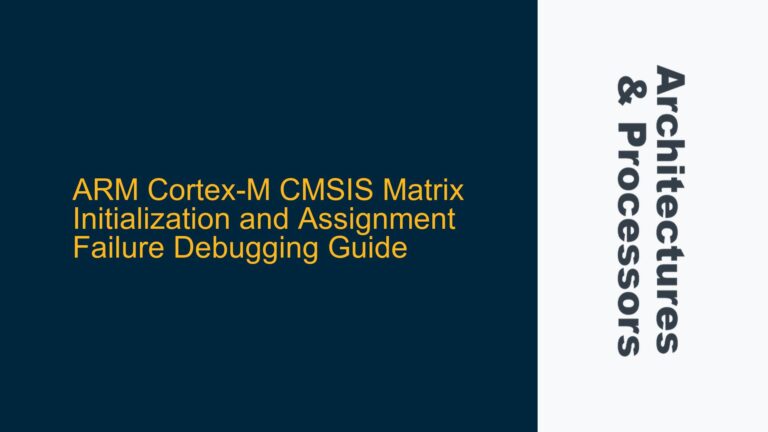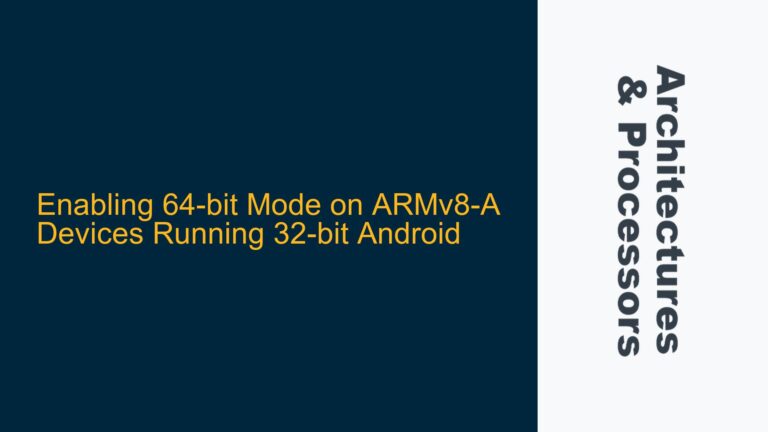AXI Addressing Scheme Misalignment in Fixed Burst Transfers
ARM AXI Protocol Fixed Burst Misalignment with AWSIZE and AWADDR The ARM AXI (Advanced eXtensible Interface) protocol is a widely used on-chip communication standard for high-performance embedded systems. It provides a flexible and efficient way to transfer data between masters and slaves in a system-on-chip (SoC). However, one of the more nuanced aspects of the…
